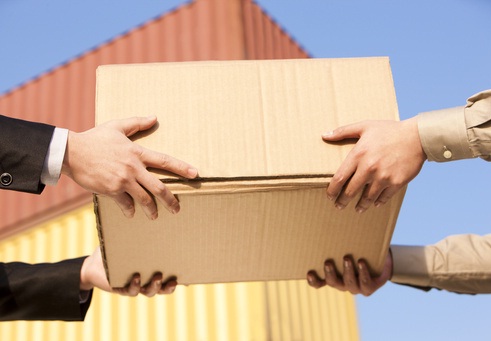Getting a recalcitrant customer to pay upis always tough, especially when s/he is in another country. Butthis doesn't mean that you will be not paid. In this case you just need to put a little extra effort in it in order to be well-prepared before you ship your products.
Laurel Delaney, a successful
entrepreneur, author, speaker, educator and blogger has prepared a
list of very important tips for importers and exporters. In her book
"Exporting: The Definitive Guide to Selling Abroad Profitably"
we can find a number of strategies to help make sure we get paid.
Let's have a look at some of them.
Paypal
Many entrepreneurs have recourse to
Paypal when it comes to international transactions using it even for
amounts up to $10,000. But there is an important point you should
know about before shipping: Paypal charges 2.9 percent for domestic
transactions and 3.9 percent for international ones.
"As you grow, that 2.9 or 3.9
percent is going to look more and more onerous, and is going to cut
into your profit margins. "You don't want to be paying those
fees just for collecting money," Delaney says.
Cash in Advance
It's very hard to get your payment in
advance, says Delaney. On the other hand, "You won't get what
you don't ask for. There is a remote chance it can happen. The
hungrier they are for your product or service, the more likely it is
that they're going to do it."
There is a decent alternative that is to
ask the customer to pay in installments. One common arrangement is
for the customer to pay a third up front, a third while you're doing
the manufacturing, and a third when you release the goods and they
receive the products.
Sight Draft
Sight
drafts are used with
both air shipments and ocean shipments for financing transactions of
goods in international trade. "It is the most common
financing tool used by small- and medium-sized businesses that are
doing business overseas", says Delaney. "You'll need some
help from your bank and your shipping company or freight forwarder to
set it up."
Importantly, a sight draft allows you to
draw a check on your buyer's bank account. With a site draft, your
international client will not be able to take possession of the
shipment until they sign a document saying the shipment has been
made. When they do, their bank will pay you.
Letter of Credit
A Letter of Credit is mostly used for long-distance and
international transactions since they ensure that payment will be
received. Using documentary letters of credit allows the seller to
significantly reduce the risk of non-payment for the shipment by
replacing the risk of the buyer with that of the banks.In
effect, a letter of credit substitutes the creditworthiness of your
customer's bank for that of your customer itself.
A
letter of credit will be paid in conformity with the conditions in
the letter of credit itself, which often include an inspection of the
shipment itself.
In
general, a letter of credit will cost you about 1/8 of one percent of
the value of the shipment, says Delaney. "It brings you peace of
mind," says Delaney, "It's worth the price, and it's worth
your time."
If You Didn't Prepare in Advance…
If your customer has already received
your goods, and you have done nothing to be sure you get paid, all is
not lost. But you have got a lot of legwork to do. "It's almost
as if you're treating the customer as if they're local," says
Delaney.
For a small dollar amount, start with a
simple email, says Delaney. Ask: "Is there something we failed
to do? Perhaps we do not understand the timeline for payment?"
Mention that you will send someone to their office to discuss it in
person.
If that doesn't work, send a more
insistent email, and say that really, you would hate to have to ask
the U.S. Embassy for help, because you wouldn't want to do anything
to tarnish this most valued customer's reputation. If the customer
still refuses to pay, you absolutely can go to the U.S. Embassy in
the customer's country and ask for their help. Often, just the threat
of this will get people to pay up.
There are other ways to find government
officials who can help you in this situation. At www.export.gov, pull
down the tab for the market your delinquent customer is located in.
There, you'll find a list of specialists categorized by industry or
product. Find the specialist in your product and country, explain
them in detail what is going on, and ask them for help.
"Almost nobody will do this,"
says Delaney. That makes your odds all the better when you do.






No comments:
Post a Comment